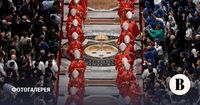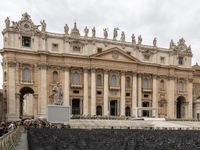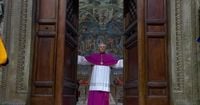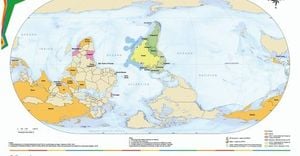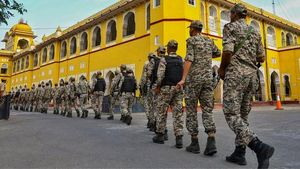The doors of the Sistine Chapel closed on May 7, 2025, marking the beginning of the conclave in the Vatican, a secretive process to elect the new head of the Roman Catholic Church following the death of Pope Francis on April 21, 2025. Archbishop Diego Giovanni Ravelli pronounced the traditional phrase "Extra omnes," which means "everyone out" in Latin, signaling the start of the conclave.
With 133 cardinals under the age of 80 participating in this significant event, the atmosphere was charged with anticipation. The cardinals, isolated from the outside world, were required to surrender their mobile phones and all electronic devices to maintain the confidentiality of the proceedings. As representatives of the Vatican press service confirmed, all means of communication were disabled within the chapel.
Earlier in the day, a solemn mass known as Pro Eligendo Pontifice, or "For the election of the Pope," took place in St. Peter's Basilica, presided over by Giovanni Battista Re, the head of the College of Cardinals, who, due to his advanced age of 91, is not participating in the voting. During his address, he emphasized the challenging times faced by the Church and expressed hope that the new pontiff would inspire society and awaken spiritual consciousness.
The conclave, a centuries-old tradition, has been modernized somewhat for security. The Vatican plans to use signal jammers around the Sistine Chapel to prevent any electronic surveillance or communication from outside the conclave. This is a significant step, as the Church seeks to protect the sanctity of this pivotal moment in its history.
As the cardinals prepared for their first vote, they were given a report titled "Report of the College of Cardinals," which provided insights into approximately 40 candidates for the papal throne. This document analyzed their positions on various issues, including the blessing of same-sex couples, the role of women deacons, and the Church's teachings on contraception. Such discussions indicate a desire among some cardinals for a shift in direction from the progressive reforms initiated by Pope Francis.
In the days leading up to the conclave, preparatory meetings were held where both electing cardinals and their non-voting colleagues gathered to discuss the qualities that the next pope should possess. They emphasized the need for a spiritual mentor who could not only strengthen the Catholic Church's position but also foster connections with representatives of other faiths and cultures.
As the first round of voting commenced, it was clear that the cardinals were acutely aware of the gravity of their responsibility. To be elected, a candidate must secure at least two-thirds of the votes, which translates to 89 out of the 133 participating cardinals. If a pope is not elected within three days, a day of prayer and reflection will be observed, and the voting process will resume thereafter.
The significance of the Sistine Chapel itself was highlighted by Barbara Jatta, director of the Vatican Museums, during a press conference. She remarked, "The Sistine Chapel is not just a repository of art; it is above all a place of divine service." The chapel's ceiling, adorned by Michelangelo, and the monumental frescoes, including the "Last Judgment," serve as a reminder of the divine mission entrusted to the cardinals gathered there.
As the cardinals cast their votes, the public gathered in St. Peter's Square, eagerly awaiting news of the new pope. The smoke that will rise from the chimney on the roof of the Sistine Chapel will signal the outcome of the voting process. White smoke indicates that a new pope has been elected, while black smoke signifies that no decision has yet been reached.
Authorities in Rome estimate that up to 250,000 people may gather in the square, mirroring the attendance at Pope Francis's farewell ceremony. To ensure safety and order, approximately 4,000 police officers and military personnel, along with 3,000 volunteers, have been deployed.
As the conclave unfolds, the world watches closely, with many speculating on who will emerge as the next leader of the Catholic Church. Among the names mentioned as potential candidates are Cardinal Luis Antonio Tagle from the Philippines, Cardinal Gérald Lacroix from Quebec, and Cardinal Joseph Tobin from the United States. Experts predict that the next pope may lean more conservatively than his predecessor, indicating a potential shift in the Church's approach to various social issues.
The conclave is not just a political process; it is also a deeply spiritual one, with the cardinals seeking divine guidance in their decision-making. The weight of history and tradition hangs heavy in the air, as the cardinals are reminded of their sacred duty to lead the Church forward.
As the first day of voting concludes, the cardinals remain committed to their task, knowing that their choice will shape the future of the Catholic Church for years to come. The eyes of millions are upon them, and the world waits with bated breath for the smoke to rise, heralding the dawn of a new papacy.
